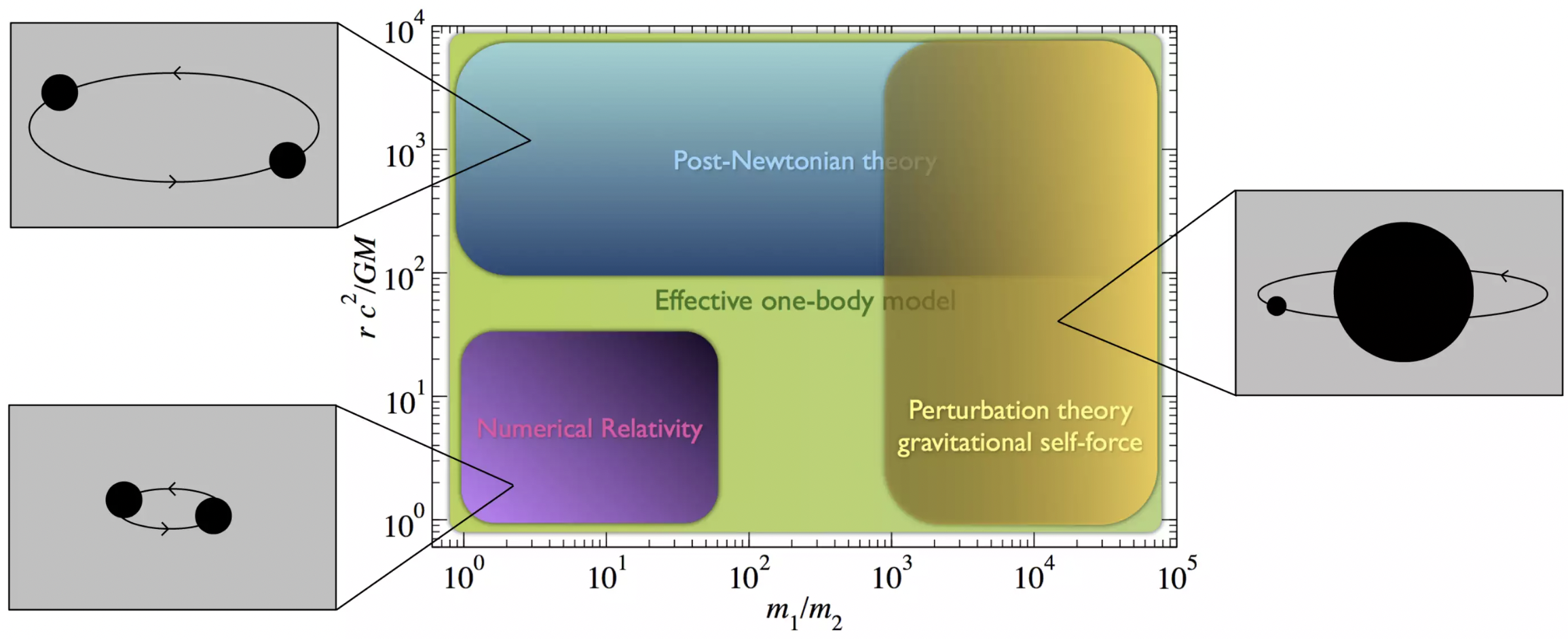Gravitational-Wave Emission
Gravitational waves are tiny ripples of the spacetime. These ripples are produced through the accelerated motion of heavy objects and they propagate as transversal waves outward from their source at the speed of light. While already proposed by Heaviside and Poincaré, it was Albert Einstein who had set the fundament for a correct interpretation and computation of these sources based on his Theory of General Relativity.
At the lowest order, gravitational-wave radiation can be approximated through the quadrupole formula

in which the left-hand side (the spatial part of the trace reversed perturbation of the metric) depends on the distance to the source D, as well as the second time derivative of the quadrupole moment of the source Q. Due to the prefactor G/c^4 it becomes evident that only objects with an extremely large second time derivative of the quadrupole tensor could create detectable gravitational waves. Because of this reason, it is understandable that all previously detected gravitational-wave signals originated from compact binaries (binary black holes, binary neutron stars, black hole - neutron stars) in which the compact objects orbit around each other with velocities that can reach a few tenths of the speed of light.
Since gravitational waves transport energy and angular momentum, their emission changes the dynamics of the system. Most notably, the emission leads to a reduction of the distance between the two compact objects and consequently the frequency with which the objects orbit around each other increases. Such an increase in the orbital motion was seen in 1974 through accurate measurements of the Hulse–Taylor binary pulsar. The theoretical predictions (based on the theory of general Relativity) and the observational data matched perfectly. The first direct observation of gravitational waves was not made until 2015, when a signal generated by the merger of two black holes was received by the LIGO gravitational wave detectors.
In addition to compact binary systems, also other sources such as the big bang could create detectable gravitational waves.
Gravitational-Wave Modelling
Due to the complexity of Einstein's field theory, there is to date no closed form solution to the two-body problem and one requires models to describe model the compact binary coalescence and the emitted gravitational-wave signals. Among the most important approaches are: numerical-relativity simulations, Post-Newtonian predictions, the effective-one-body approach, or black hole perturbation theory (see image below A. Buonanno, B.S. Sathyaprakash in: General Relativity and Gravitation: A Centennial Perspective; Cambridge, University Press (2015) )
Considering binary neutron star and black hole - neutron star systems, one also has to incorporate finite-size effects and the internal structure of neutron stars, i.e., the tidal deformability –describing the deformability of the neutron star – enter gravitational-wave model descriptions. Over the last years, there has been significant progress in modeling binary neutron star systems capturing the strong-gravity and tidally dominated regime of the late-inspiral, but current models will not be sufficient to provide unbiased source predictions of future gravitational-wave detections.

